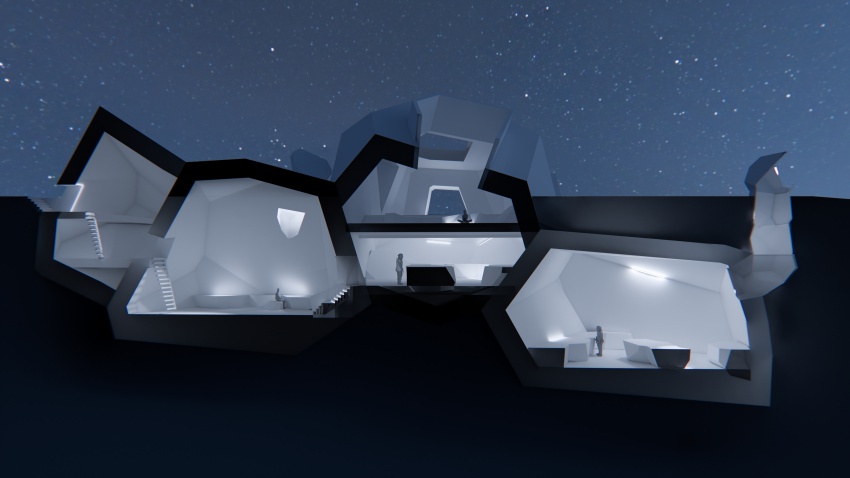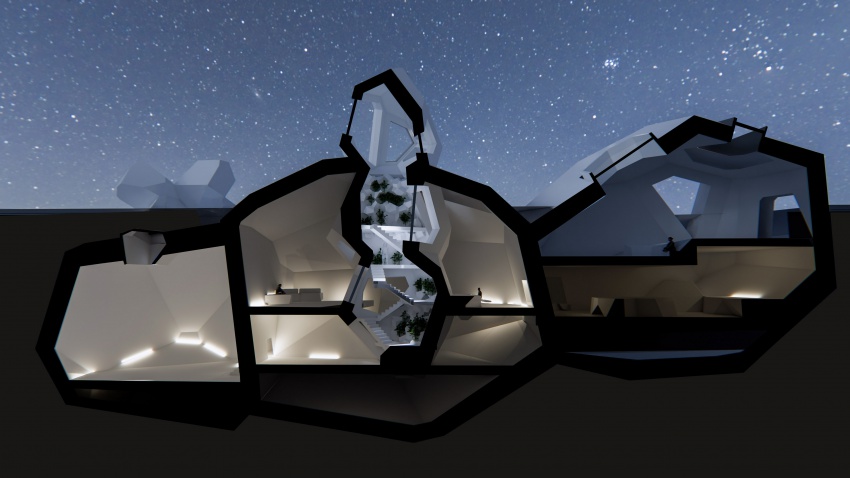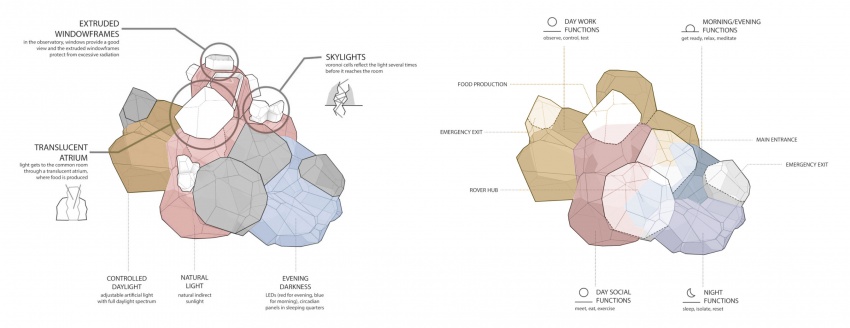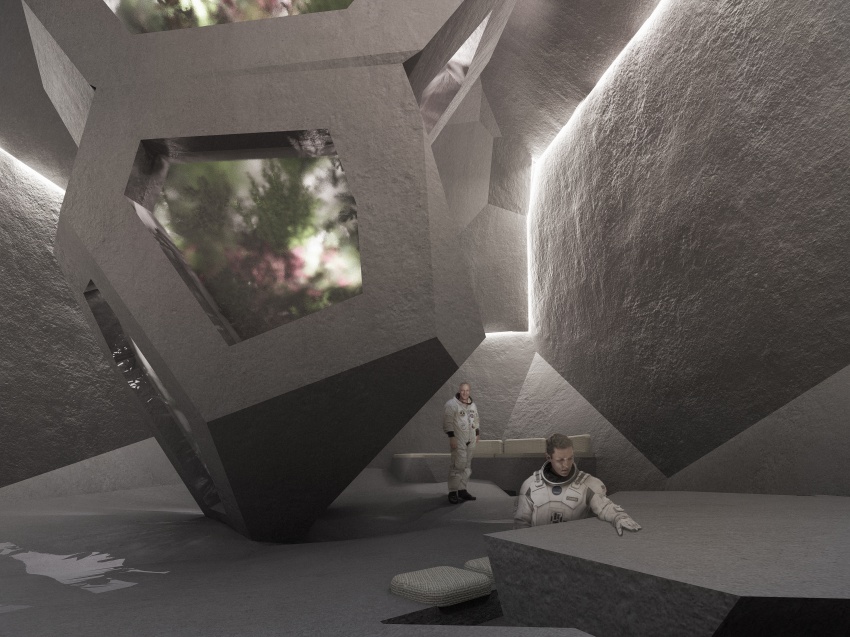Difference between revisions of "Shared:WS2024MSc2SAG2Design"
| Line 23: | Line 23: | ||
<div style="float:left; width: 130px; height 30px; border: 1px solid #aaa; margin-right:10px;" align="center"> | <div style="float:left; width: 130px; height 30px; border: 1px solid #aaa; margin-right:10px;" align="center"> | ||
[[Shared:WS2024MSc2SAG2Presentations|'''Presentations''']] | [[Shared:WS2024MSc2SAG2Presentations|'''Presentations''']] | ||
| + | </div> | ||
| + | <div style="float:left; width: 130px; height 30px; border: 1px solid #aaa; margin-right:10px;" align="center"> | ||
| + | [[Shared:WS2024MSc2SAG2Video|'''Video''']] | ||
</div> | </div> | ||
</div> | </div> | ||
Revision as of 20:01, 23 April 2024
Group 2: Marina Kathidjiotis - Katarzyna Prokopiuk - Cătălina Perșunaru - Jan Kwaśnik
Final design | 22.04.2024
The design of the Moon Habitat follows the voronoi logic on all scales to allow for structural, functional and visual flexibility. It is designed to accommodate a HRI-based construction process, using the lunar regolith available on site. Different lighting strategies are applied to simulate the light exposure on Earth and help maintain circadian rhythms of the astronauts.
concept
plan and sections
The habitat is divided into smaller volumes, each representing a specific function. The rooms are grouped in three zones - night functions, social day functions and work-related day functions. They all use various natural and artificial lighting strategies to simulate the 24h day on Earth. Natural sunlight dominates in the social day functions, including the central atrium with a food production unit acting as a big skylight.








